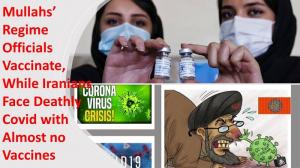(Video) Details of Iran’s Drone Program, Reinforces Need To Hold the Regime Accountable
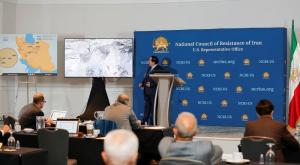
(PMOI / MEK Iran) and (NCRI): NCRI US representative office revealed new details about the production, dissemination, and deployment of unmanned aerial vehicles used by both the Iranian regime and its militant proxies in the surrounding region.
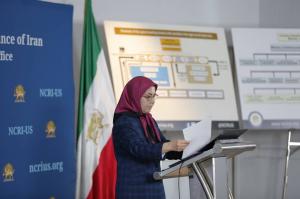
(PMOI / MEK Iran) and (NCRI): The information in question was reportedly obtained from an intelligence network maintained by the People’s Mojahedin Organization of Iran (PMOI/MEK).
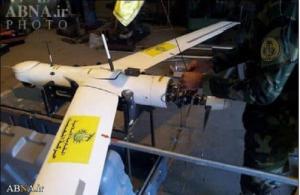
(PMOI / MEK Iran) and (NCRI): At least four Iraqi Shiite groups have since begun making use of such technology. This has permitted them to target specific assets. “The drones are a big deal, one of the most significant threats our troops there face,”.

(PMOI / MEK Iran) and (NCRI): Between April and June, Iran-backed militants in Iraq launched at least six attacks using drones. Although no casualties were reported in any case, American officials responded by acknowledging the seriousness of the threat.
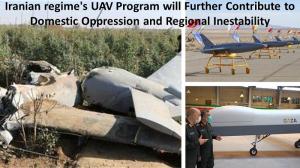
(PMOI / MEK Iran) and (NCRI): Iranian regime's UAV Program will Further Contribute to Domestic Oppression and Regional Inestability.
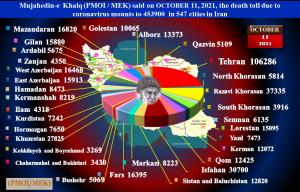
(PMOI / MEK Iran) and (NCRI): The People's Mojahedin Organization of Iran (PMOI/MEK) announced on Monday, October 11, 2021, that the Coronavirus death toll in 547 cities had exceeded 453,900.
The Iranian Resistance’s conference identified one major complex in Semnan that had been operational only since 2019.
The information in question was reportedly obtained from an intelligence network maintained by the People’s Mojahedin Organization of Iran (PMOI/MEK). The press conference touched upon the long history of Tehran’s development of drone and missile stockpiles as compensation for the inability to modernize its traditional air force in the face of international sanctions. Among several facilities highlighted by the NCRI was one that was established in the name of Paravar Pars Company alongside the Sepehr Airport in 1995. The press conference noted that the facility was associated with the Revolutionary Guards (IRGC) since the beginning, and in 2005 was placed under the control of the IRGC Aerospace Force. It functions to build drones and ultralight aircraft, as well as to install new equipment on existing vehicles.
The NCRI’s presentation of historical context was balanced with disclosures about very recent developments regarding drone production and underlying infrastructure. The Iranian Resistance’s conference identified one major complex in Semnan that had been operational only since 2019. This reflects the growth in the perceived importance of UAVs among the regime’s military and paramilitary leadership, which is represented in the facility’s operations. The Semnan complex is a site of joint activity by the army, the IRGC, the State Security Forces, and an IRGC-linked militia known as the Bassij.
The drones produced at Semnan were intended for use in border regions. Some of the facility’s products have played a role in the recent proliferation of drone technology among the regime’s proxies just beyond Iran’s western border, in Iraq. Concerns about that proliferation were publicly expressed by American military officials earlier this year, in the wake of multiple drone attacks on US interests in the country.
Between April and June, at least six such attacks were recorded, with at least one of them targeting a covert facility and highlighting the likely growth in sophistication not only of the militants’ drone technology but also their intelligence operations and infiltration of the Iraqi power structure. Both categories of activity are supported by the Quds Force, the IRGC division dedicated to operations outside Iran. The Quds Force has been creating more highly-specialized groups within its existing militant framework, including groups trained on the use of modern drone technology.
At least four Iraqi Shiite groups have since begun making use of such technology. This has permitted them to target specific assets. “The drones are a big deal, one of the most significant threats our troops there face,” said Michael P. Mulroy, a former CIA officer and top Pentagon official dealing with Middle Eastern affairs, in conversation with journalists in May.
The Iraqi militants are not the first to benefit from the regime’s investment in drone technologies. Hezbollah, the Lebanese terrorist group, began openly operating drones based on Iranian design in 2004. By 2013, Hezbollah’s stockpile of such aircraft had grown into the dozens, or perhaps into the hundreds. In 2017 and 2018 Houthi militants in Yemen were found to be penetrating deeper and deeper into the territory of Saudi Arabia.
In January 2018, a United Nations Panel of Experts concluded an analysis of components recovered from sites where drones had been used in kamikaze missions in Saudi Arabia and announced that the drones in question were virtually identical to those manufactured by the Iranian regime. Similar analyses have been conducted more recently with components recovered in Iraq, and the findings have been the same.
The widespread proliferation of Iranian-made drones, as well as drones made elsewhere based on the regime’s designs, reflects considerable investments by the Iranian regime. Those investments represented the expropriation of funds plundered from Iran’s national wealth through practices such as the confiscation of property in the wake of political imprisonment.
The regime’s drone program represents a growing threat both to global security and to a domestic population that is suffering from an 80 percent poverty rate and a coronavirus epidemic that remains almost entirely out of control. Yet, the world community is maintaining too soft a stance in the face of such threats, while it should sever all diplomatic and economic ties with the Iranian regime pending serious conciliatory gestures from the regime.
“Any dealings with the regime in Tehran… must end,” the NCRI said in a statement accompanying the press conference. “All activities, including production, use, and research on drones and the regime’s missile program must be included in demands. Otherwise, because of its severe domestic weaknesses, the clerical regime will place more emphasis on creating regional instability in order to buy time and preserve its rule.”
Of course, such investments necessarily require that the Iranian regime redirect assets away from civilian projects and domestic spending at a time people of Iran are in dire need of assets to confront the pandemic. The NCRI made mention of the pandemic in the conclusion of a statement accompanying its press conference, citing the lack of meaningful government interventions as one of the effects of a strategy that prioritizes military development over virtually everything else.
Separately, the MEK has issued a number of reports on the effects of Covid-19 upon Iran. Whereas Iranian government authorities, currently report the country’s death toll from the novel coronavirus as just over 122,000, the MEK and NCRI place the figure at around 453,900. This estimate stems from leaked records from hospitals, morgues, and local authorities, as well as eyewitness statements and survey data from healthcare workers and professionals in other relevant industries.
According to the regime’s critics, its undercount of infection and mortality rates reflects the persistent influence of early, official disinformation, plus an urgent impulse to cover up the severity of Tehran’s mismanagement of the situation. Some aspects of that mismanagement have been readily apparent, however, as when the regime’s Supreme Leader Ali Khamenei banned the import of American and European vaccines, leaving the country to rely on domestic alternatives and doses imported from elsewhere, despite them being less effective and less readily available.
“The regime is spending billions of dollars on its missiles and UAV programs while 80 percent of the Iranian people live under the poverty line and the budgets for health care, education, and other national requirements are abysmally lower than military expenditures,” the NCRI said in its statement on Wednesday. It went on to place a portion of the blame for this situation on Western policymakers, arguing that the easing of sanctions under the 2015 Iran nuclear deal provided little to no benefit for the Iranian people, but allowed the clerical regime to ramp up financing for drones, missiles, and other weapons “in order to export terrorism and warmongering in the region.”
The new category of operations, in Iraq and elsewhere, has been made possible not just through the smuggling of Iranian equipment and the sharing of Iranian technical knowledge, but also through Iranian efforts to train its proxies in the effective use of drones technology. As Iran compensates for budget limitations by remaining selective with that training, the apparent result is that small, specialized groups are emerging from within existing networks of terrorist proxies.
In the face of that threat, the NCRI argued on Wednesday, the US and its allies should fully isolate the Iranian regime and certainly avoid any financial dealings or easing of sanctions. “None of the sanctions against the regime should be lifted until it has stopped all its rogue behavior and intransigence in the region,” the coalition said before adding that Western policies should also aim to curtail the regime’s neglect, mistreatment, and repression of its own people.
Mrs. Maryam Rajavi the President-elect of the National Council of Resistance of Iran’s (NCRI): For years, the mullahs have wasted the assets and properties of the greater majority of the Iranian people on suppression, wars, terrorism, and missile and nuclear programs. They have brought nothing to the people but oppression, discrimination, poverty, unemployment, and inflation.
Suppose the clerical regime had spent a small part of what they squander on domestic repression, or nuclear and missile programs, on vaccinating the population. In that case, the schools and universities would have been in healthy and safe conditions.
Shahin Gobadi
NCRI
+33 6 51 65 32 31
email us here
Visit us on social media:
Facebook
Twitter
NCRIUS Press Conference Revealing Iran's UAV Program
Legal Disclaimer:
EIN Presswire provides this news content "as is" without warranty of any kind. We do not accept any responsibility or liability for the accuracy, content, images, videos, licenses, completeness, legality, or reliability of the information contained in this article. If you have any complaints or copyright issues related to this article, kindly contact the author above.

